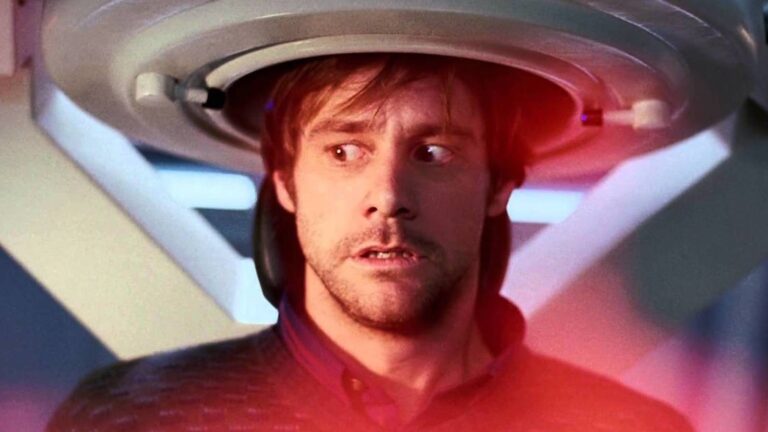There’s a scene in the ‘90s Nickelodeon kiddie-scare show “Are You Afraid of the Dark?” that, in my youngish middle age, I still can’t shake the terror of. The teen protagonist—I can’t remember if boy or girl (alternative genders were yet to be “discovered” in the late 20th century)—is knocked into an open coffin by the episode’s big bad, the lid firmly clasped shut, followed by clumps of dirt raining down on top.
The fate of interment alive. The scene, if memory serves, only lasted 15 or so seconds. But I can recall it vividly, the dim shaded blue of night, the crumbles of soil thudding on the coffin door, the victim’s made-for-TV screams of “LET ME OUT!!” For decades afterward during every school-work-casual ice-breaker query of “what’s your biggest fear?”, my go-to was “being buried alive,” which always drew weird, quizzical looks like it was somehow more morbid than “heights,” which implies falling a few stories into a bloody splat.
I could YouTube the clip, the streaming site being, as Jon Askonans described it “a powerful tool to preserve human memory.” But, pace psychoanalysts, some things aren’t worth experiencing again, and should maintain their Pynchonian mystique.
My “burial while breathing” fright may have been surpassed, or, at least, matched by a more modern threat: forced memory wiping. Move over, social media. You’re no longer the sole mind polluter on the block. An experiment led by Dr. Colin Holbrook at UCLA has constructed a cognitive hacking method to mitigate “group prejudice and religious belief.”
If it sounds like cold rationalism run amok, that’s because the smattering of reports on Dr. Holbrook’s frontal cortex finicking are alarmist. Rod Dreher doomsday-detailed the procedure. The Substack “Igor’s Newsletter,” which sounds like a gap-toothed Russki reviewing the texture of winter radishes, rang the alarm on the cerebrum study, warning “[y]our tinfoil hats will not help you this time.” (Joke’s on Igor. It’s never helped reflect the government’s dastardly psy-waves that turn you vegan, sterile, and into a Cowboys fan.)
Dr. Holbrook’s cerebral-zapping probe isn’t actually new. A report from Medical News Today eight years ago describes the working partnership between University of York and UCLA scientists that used “transcranial magnetic stimulation (TMS)” on the “posterior medial frontal cortex influenced a person’s religious and nationalistic beliefs.”
The result of the controlled experiment: “Compared with participants who received the sham treatment, those who received TMS reported a 32.8% reduction in belief in God, angels and heaven.” Just to be sure of its authenticity, the abstract is posted to the National Library of Medicine’s website—a federal government archive. It doesn’t get more official than a .gov domain address! Unless of course you’re trying to figure out the origin of the Covid-19 pandemic. You’re better off buying independent research off Temu.
Does all this decisively prove that our taxpayer-funded bench scientists now wield the power to control and erase memories, and hence have appropriated the Orwellian ability to control the future? The replication crisis in social sciences has demonstrated that one study hardly constitutes proof of concept. But it suggests a jarring, horrifying, nail-biting potential nonetheless.
Faith in God and love of country aren’t strictly a priori beliefs. They’re influenced and formed by past experiences, which, as the brain-nerds (no, not that Brainerd) tell us, is located partly in… the frontal cortex. Cattle-prodding that region could have the effects of a micro-lobotomy—flaying off a part of yourself. As Tennyson’s Ulysses forlornly observed, we are a part of all we’ve met. We’re made of memory. Or as Lee Siegel put it, our “integrated personality” is a “bundle of sensory memories, whose persistence through time guarantees a continuous self.” Removing just a sliver could corrupt our entire interior identity.
For those who, like the late critic Terry Teachout, find it “oddly pleasant to linger among ghosts,” losing that interior recollection sounds like a kind of death sentence. Sure, not being able to reach back in your mind’s eye and see yourself eating Lucky Charms while watching “The Angry Beavers” or blasting Andross’s floating head in Star Fox 64 doesn’t halt your heart or suck oxygen out of your lungs. But it’s an irrevocable loss of part of your life.
And what’s a column on the follies of mad-scientism without mentioning the political implications? To the secular liberal, or even the mild-mannered technocrat, using a machine to numb the right side of the brain’s emotional core may seem like a tantalizing prospect. Faith and flag fuel the culture wars, which are really combat between different governing philosophies. Why not utilize technology to simmer conflict and promote societal harmony? We already prescribe mounds of psychotropics to calm nerves and temper our more violent, dark, and destructive inclinations. Just have the FDA slap the label of modern medical miracle treatment on “transcranial magnetic stimulation,” then crank up a conveyer belt staffed with church-going, Uncle Sam-loving red-staters! Beg Dr. Fauci to emerge from celebrity-retirement to initiate the max muster vaccination campaign against jingoism.
What could go wrong with forcibly numbing a restless populace… besides… well… everything? Did over-ingesting Ritalin really calm a generation of high-t boys down or just subdue a sleeping monster? We already feed at a trough of bottomless digital entertainment, cheap, licit weed, and on-demand fast-food delivery. Yet misery is the watchword of every public sentiment poll.
Regardless of the tyrannical possibilities uncovered through extraneous memory-molding, the idea of being strapped down against my will like the Invisible Man and having my remembrances disintegrated with a galvanic knobstick gives me such gut-dropping dread that it has ascended to my biggest fear.
But I’d rather keep my deep-seated phobia of being entombed alive than have it discharged from my grey matter. At least the fear is mine, and not implanted by some power-grubbing bureaucrat. “So long as we have memory,” wrote Douglas Murray, “we cannot be made into automatons.” Don’t forget it.














[…] with the Sciences,” published a chronicle on dog cloning. Now, don’t be mistaken. I’m a ‘90s kid, and I remember when Dolly the sheep made the supermarket till magazine rounds. It was the same […]